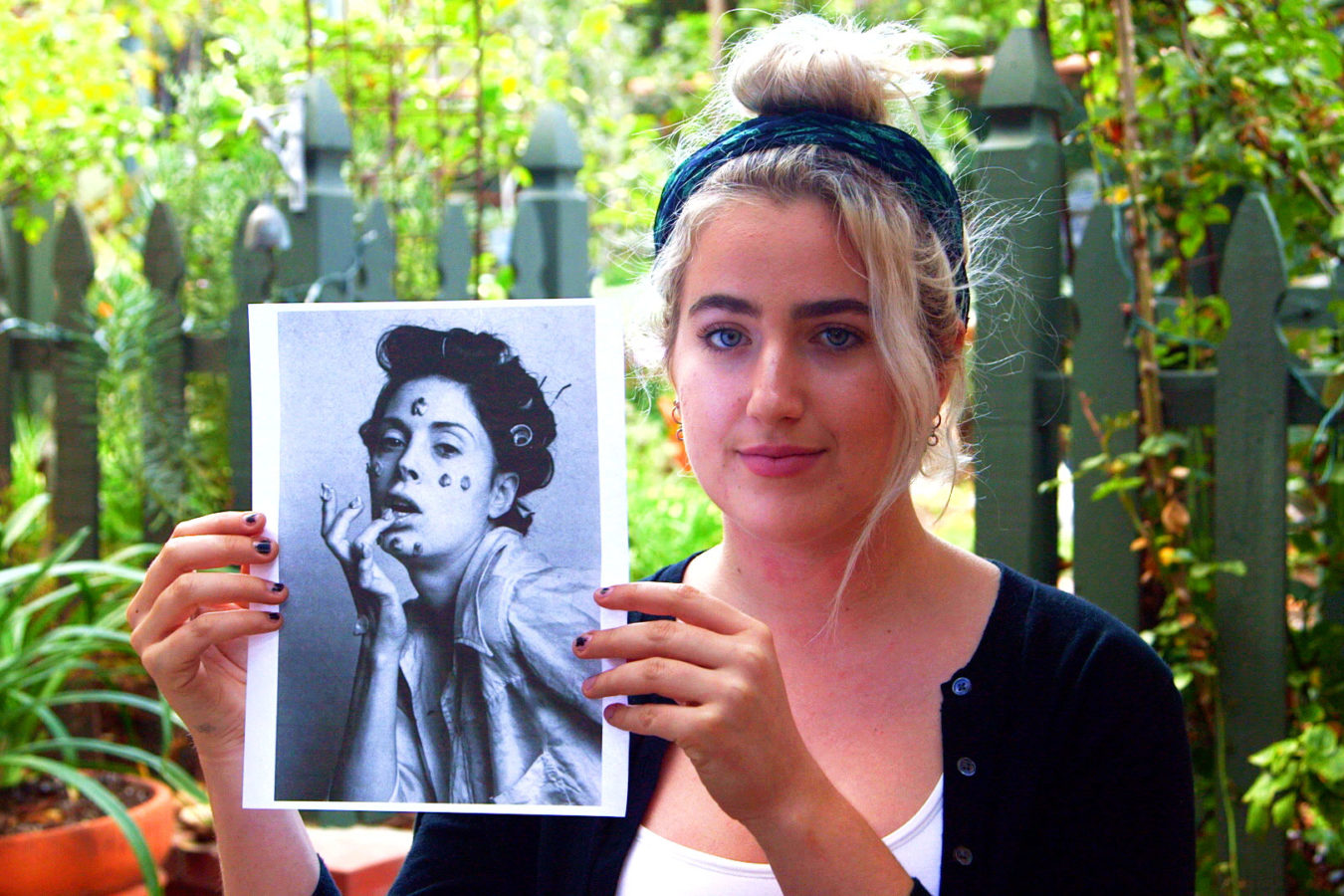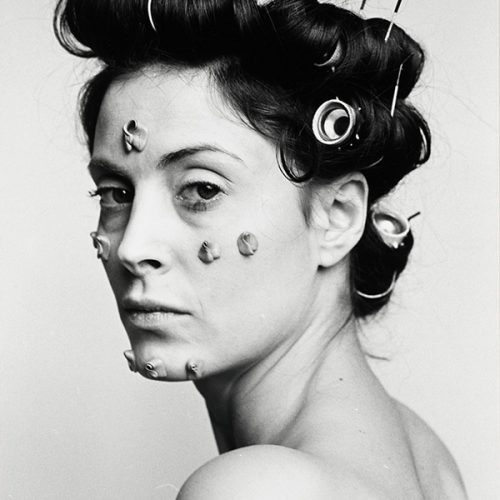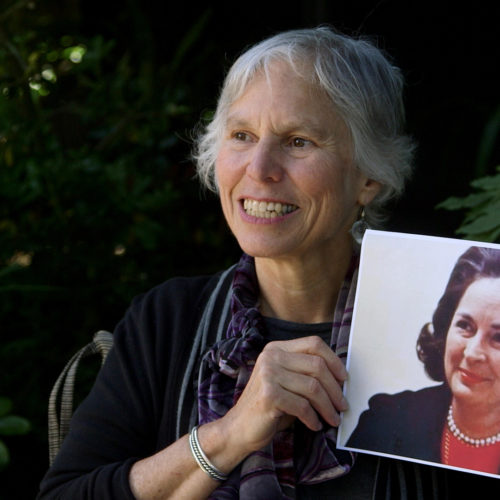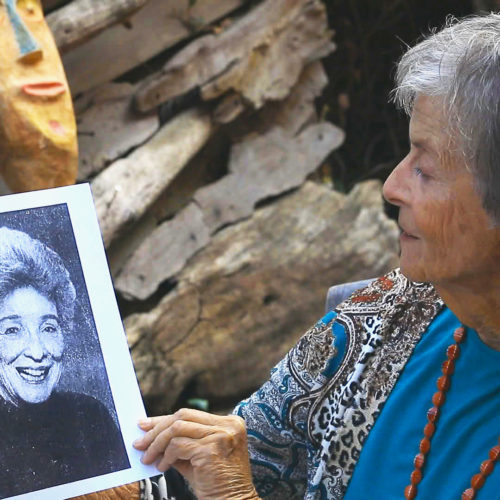Daring feminist conceptual artist Hannah Wilke worked in sculpture, drawing, assemblage, photography, performance and installation. She used the various mediums to examine and challenge prevailing notions of femininity, feminism, and sexuality. She was one of the first artists to use vaginal imagery in her work with the purpose of directly engaging with feminist issues. During the late 1950s through the early 1970s, Wilke worked on creating a type of female iconography based on the body, constructing abstract, organic forms that closely resembled female genitalia. During the 1970s, she began to use her own body for performance pieces that she called her “performalist self-portraits.” These performances, immortalized on video or in photographs, confront erotic stereotypes by calling attention to and making ironic the conventional gestures, poses, and attributes of the female body. In the years before she died of cancer in 1993, Wilke had herself photographed and videotaped during treatment as her body changed. Innovative and controversial throughout her life, Wilke’s place in 20th century art continues to be established since her death.






